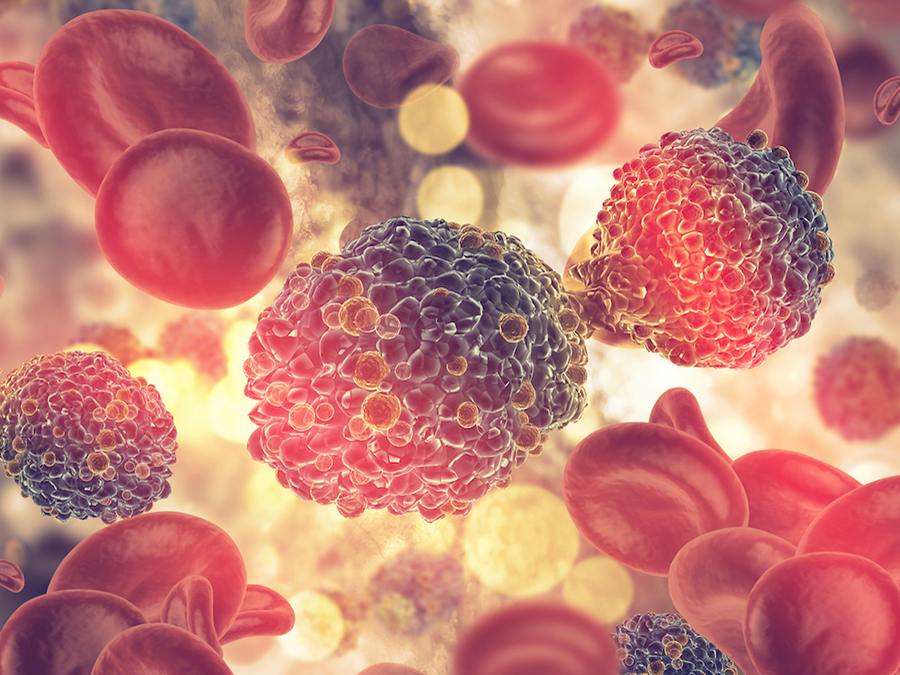Molecular landscape of multi-step virus carcinogenesis revealed by multi-modal single-cell analysis
novel therapeutic targets identified
A joint research group led by Dr. Keisuke Kataoka at Keio University / National Cancer Center Japan has completed a comprehensive multi-modal single-cell analysis of the multicellular ecosystem in viral carcinogenesis by HTLV-1analyses, dissecting the cellular and molecular alterations of the peripheral blood in HTLV-1 infection, with and without progression to leukemia. Research was conducted together with Professor Seishi Ogawa of Kyoto University and Professor Kazuya Shimoda of the University of Miyazaki. The results of this research were published on the online edition of the American journal Blood Cancer Discovery on September 3, 2021.
The findings of this study are summarized as follows:
(1) Our multi-modal single-cell analyses consist of single-cell simultaneous mRNA transcriptome, surface marker proteome, and T/B-cell receptor sequencing of 233,093 peripheral blood mononuclear cells from 30 ATL patients, 11 HTLV-1 asymptomatic carriers, and 4 healthy donors.
HTLV-1 HBZ gene expression and single-cell TCR-seq clearly demarcate HTLV-1-infected nonmalignant cells from uninfected and malignant cells, enabling the precise characterization of the biological properties and phenotypic expressions of HTLV-1-infected cells for the first time.
(2) Different sets of genes/molecules are upregulated at different stages, cooperating in malignant transformation. These include LGALS1 and CD99, whose functions were examined in vitro and/or in vivo, suggesting potential immunotherapy targets.
(3) Single-cell TCR sequencing reveals the presence of clonally proliferating HTLV-1-infected premalignant CD4+ T cells, which are characterized by excessive MHC class II attenuation.
(4) HTLV-1 infection and ATL development induce common and different changes in the immune microenvironment. Prominent changes are selective expansion of myeloid cells and reduction of B cells in ATL, pointing to their potential as therapeutic targets.
(5) Single-cell data combined with a newly generated mouse model and in vitro co-culture analysis demonstrate that upregulated PD-L1 in CD274 structural variation-harboring tumors is transferred into nonmalignant microenvironmental cells. Notably, the transferred PD-L1 inhibited the proliferation of activated CD8+ T cells. These results suggest that genetically overexpressed PD-L1 in tumor cells serves as a major source of PD-L1 expression in the microenvironment, shedding light on the intricate mechanisms for evading anti-tumor immunity.
The results of this study manifest the potential of multi-modal single-cell analysis. They represent a major advance in understanding the genetic and biological basis of premalignant clonal expansion, multi-step viral carcinogenesis, and alterations of the immune microenvironment, with clinical implications.
This work was supported by the Japan Agency for Medical Research and Development (AMED; JP20wm0325013, JP19ck0106261, JP19ck0106254, JP20ck0106542, JP20ck0106538, and JP20cm0106575), Japan Society for the Promotion of Science (JSPS) KAKENHI (19K22573), National Cancer Center Research and Development Funds (31-A-4), the Takeda Science Foundation, the Naito Foundation, and the Japan Leukemia Research Fund.
Paper Information
Junji Koya, Yuki Saito, Takuro Kameda, Yasunori Kogure, Mitsuhiro Yuasa, Joji Nagasaki, Marni B. McClure, Sumito Shingaki, Mariko Tabata, Yuki Tahira, Keiichi Akizuki, Ayako Kamiunten, Masaaki Sekine, Kotaro Shide, Yoko Kubuki, Tomonori Hidaka, Akira Kitanaka, Nobuaki Nakano, Atae Utsunomiya, Yosuke Togashi, Seishi Ogawa, Kazuya Shimoda, Keisuke Kataoka, “Single-cell analysis of the multicellular ecosystem in viral carcinogenesis by HTLV-1” (2021), Blood Cancer Discovery, DOI: https://doi.org/10.1158/2643-3230.BCD-21-0044



